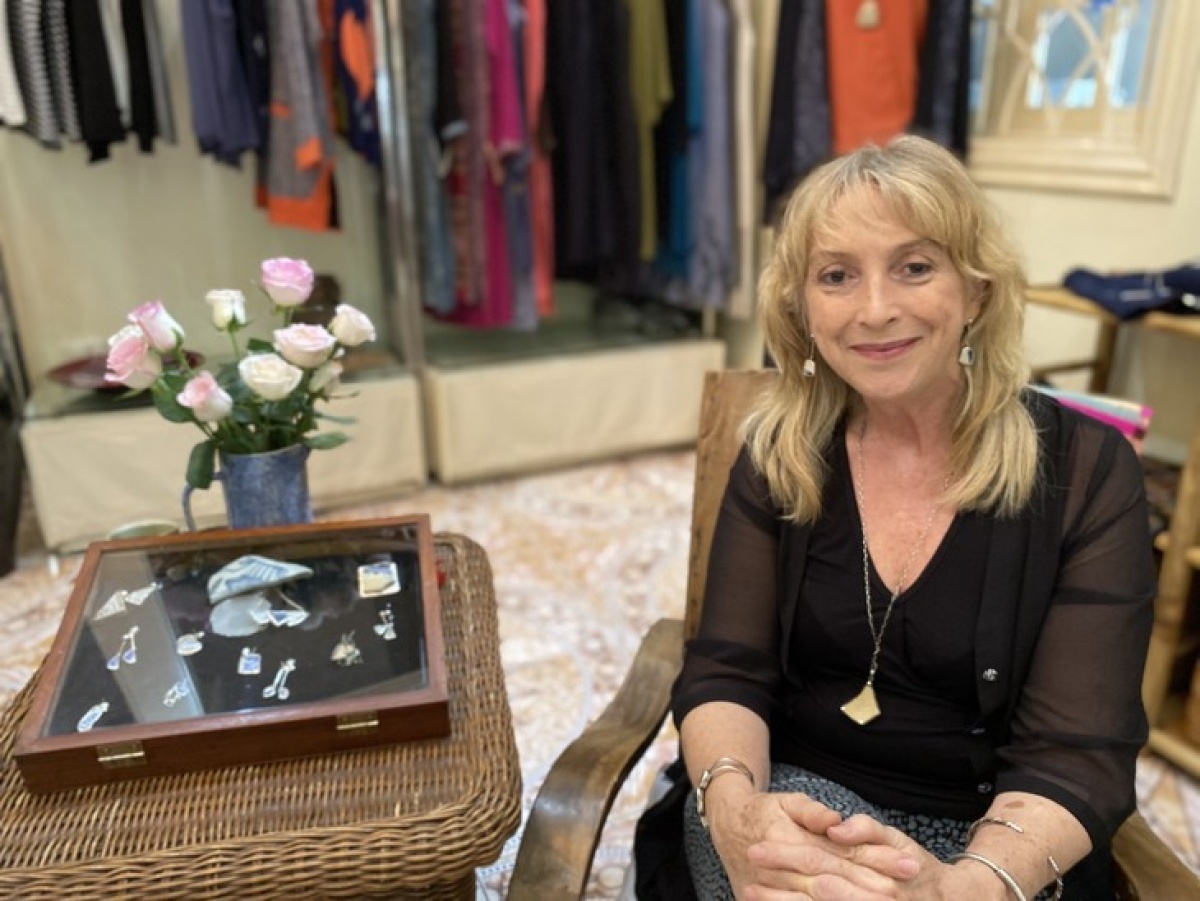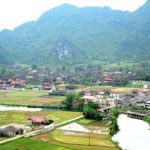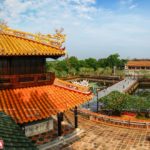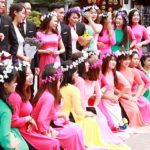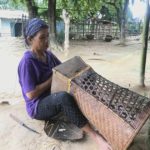Cynthia’s growing endearment for Vietnam’s cultural traditions, history, and community has kept the designer here for 14 years.
Some people may like to spend their vacations lying on the beach, doing nothing but enjoying the sound of waves, the smell of water, the white sand, and the cool breeze. But Cynthia loves to spend days on the beach collecting her own “treasures” – fragments of ceramics that have washed up on the shore. It has always been her source of inspiration for jewelry designs.
“I had a trip to Phu Quoc on holiday and I found some pieces of ceramics on the beach. I just thought wow, they’re so unique and beautiful pieces of history. They’re wasted sitting here on the beach, nobody getting, covered in sand. They’re made from natural products, but they’ve been cast off and thrown away,” said Cynthia.
“And it was a really nice way to rekindle and remind people of Vietnam’s seafaring history and how important the coastline has been to the Vietnamese over centuries.”
Cynthia introduced a few pieces of jewelry to VOV in her showroom on To Ngoc Van street in Hanoi. Each earring, necklace, or ring showcased here has a hidden story of its journey in the sea.
“If you touch this one, you can feel how rough it is, so that’s probably a piece from a shipwreck because it’s really old and it’s been in the ocean a really long time. But then if you feel that one, it’s really smooth, so it’s probably quite new, maybe it’s off the fisherman’s boat or washed down one of the rivers from one of the villages,” said Cynthia.
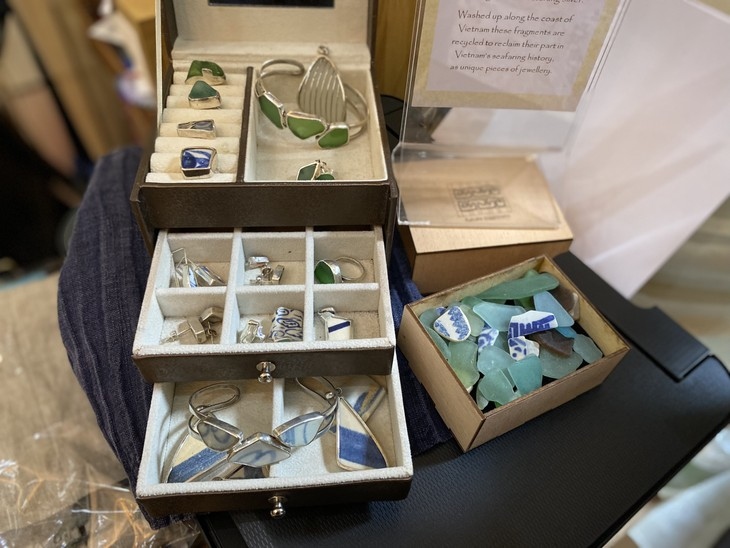
Whatever the story of these fragments, each piece has been given a new lease on life through Cynthia’s designs and the local silversmith’s skills to become sterling silver accessories. Some of them are shiny, and some are matte, but each piece is a one-off and unique.
Cynthia’s fashion brand also grew with her love of Vietnamese ethnic minority textiles. During a trip to Bac Kan in northern Vietnam, Cynthia was introduced to the Dao people’s brocade material and hand-embroidered products. Mesmerized by the sophistication of this fabric, she began to learn about its features and applicability to bring it into her fashion designs.
In the early days, Cynthia went directly to the mountainous villages to find local textile producers. After completing the designs, she sent them to these producers and handicraft artisans for weaving and embroidering. Cynthia now works mostly with women of the Dao, Hmong, and Thai ethnic minorities. She also got a lot of weaving done through Hoa Tien, a weaving village in the central province of Nghe An.
The designer said that the more she works with ethnic people, the more she is drawn to the way they bring life stories into the motifs of their costumes.
“I work with ethnic minority textile producers and part of our logo is based on the dream maze symbol of the Hmong people, the embroidery that they have on their jackets when they get married,” Cynthia said, adding, “It symbolizes good fortune, good harvests, many children, all good things basically. I love that symbol, and it makes me think of the mountains and the different communities that live there.”
The Melbourne designer said she is impressed by how similarities and distinctions of the patterns in clothes can tell apart different communities.

“If you see a Red Dao woman from Ta Phin and a Red Dao woman from a village on the other side of Sapa, you will know where they come from. They both look like they’re reads out, but in fact, they will be able to tell where they are from because of the patterns and because of the small differences in their clothing. It’s so much a part of their cultural identity and almost their geographical identity that I find really fascinating,” she said.
Cynthia first visited Vietnam in 2003 to help her friend complete a documentary project and decided to move to Hanoi in 2008. She said that she found an endearment for Vietnamese cultural tradition, history, and community in her work and life here, and that has kept her staying until now. She said that she was grateful for receiving great support from people around her and satisfied with her decision to stay and develop her career in Vietnam.
“I think it’s a real privilege to be here in Vietnam. Vietnam in many ways is a land of opportunities for everybody, not just blow-ins like me, but also for Vietnamese people. There are so many opportunities to do new things and to explore ideas. There’s a willingness to try to do things here and solve problems or to take a problem and go. How can we creatively turn this upside down? I think that’s really exciting.”
Tapping the values of UNESCO-recognized world heritages
Vietnam has a rich and storied treasure of natural and cultural heritages which are the pride of every Vietnamese. The country has attached great importance to conserving and promoting its heritages, which not only bring in tourism revenue but more importantly show the image of a Vietnam with a long history and rich culture.
